On Seabirds and Surprises
- sydneyrswitzer
- Jun 4, 2021
- 4 min read
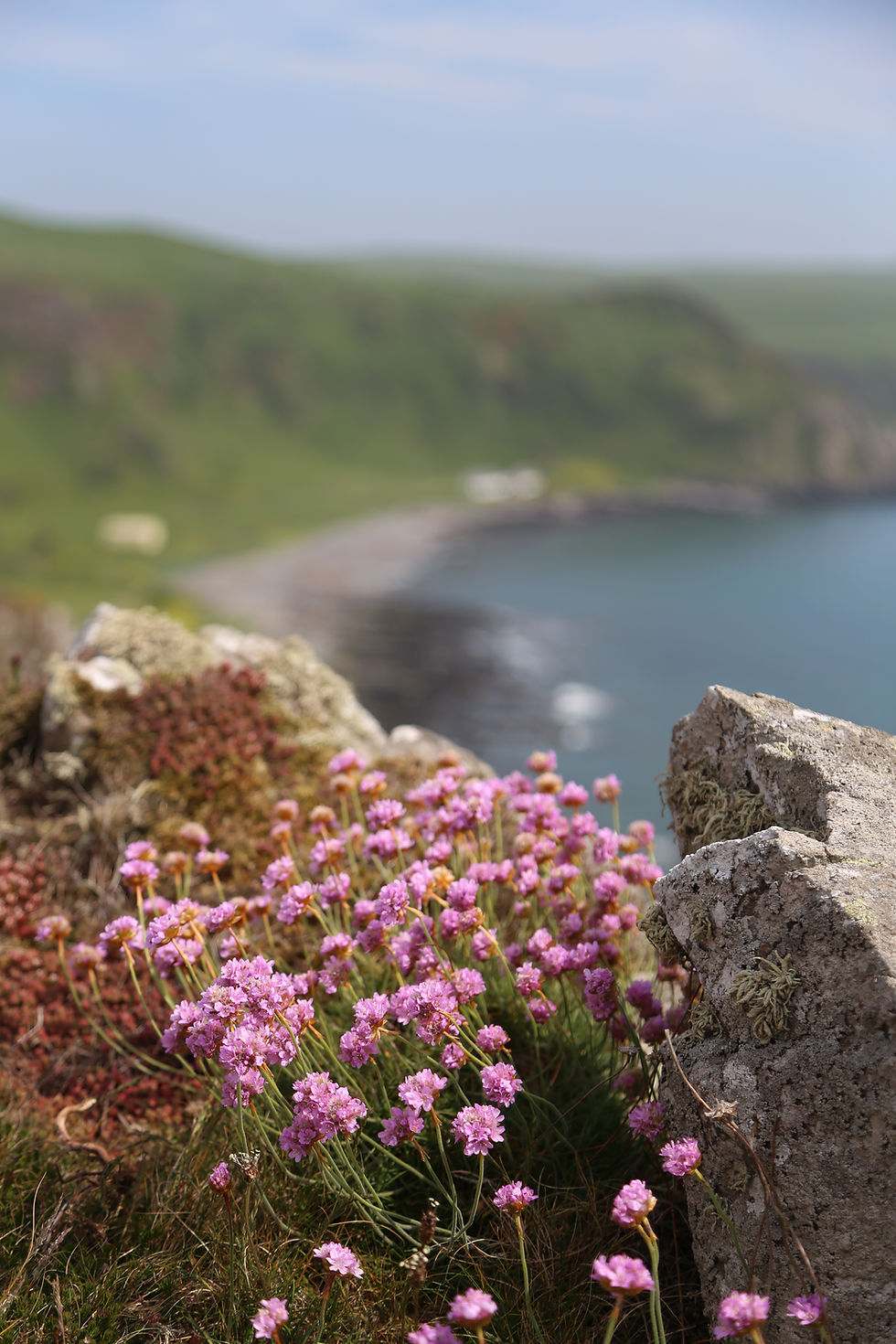
The smell of a seabird cliff is pungent. At first it seems revolting, but after some time, perched on the edge of a cliff, one begins to acclimate. It smells a little bit sweet, and a little bit salty. It’s hard to describe. The closest thing I can compare it to is a bat cave I visited in Indonesia, although that’s also a difficult smell to conjure purely by imagination. It smells a bit old, like layers of peat that have been piling up for years.

But the thing about the smell is that you don’t smell it until you’re very nearly at the edge of the cliff. From a distance you can see the white stains streaming down the dark rock, and even closer you begin to hear the squawking - high tones and low tones all mixed together. But it’s not until you’re right at the very edge of the cliff that you encounter the smell.
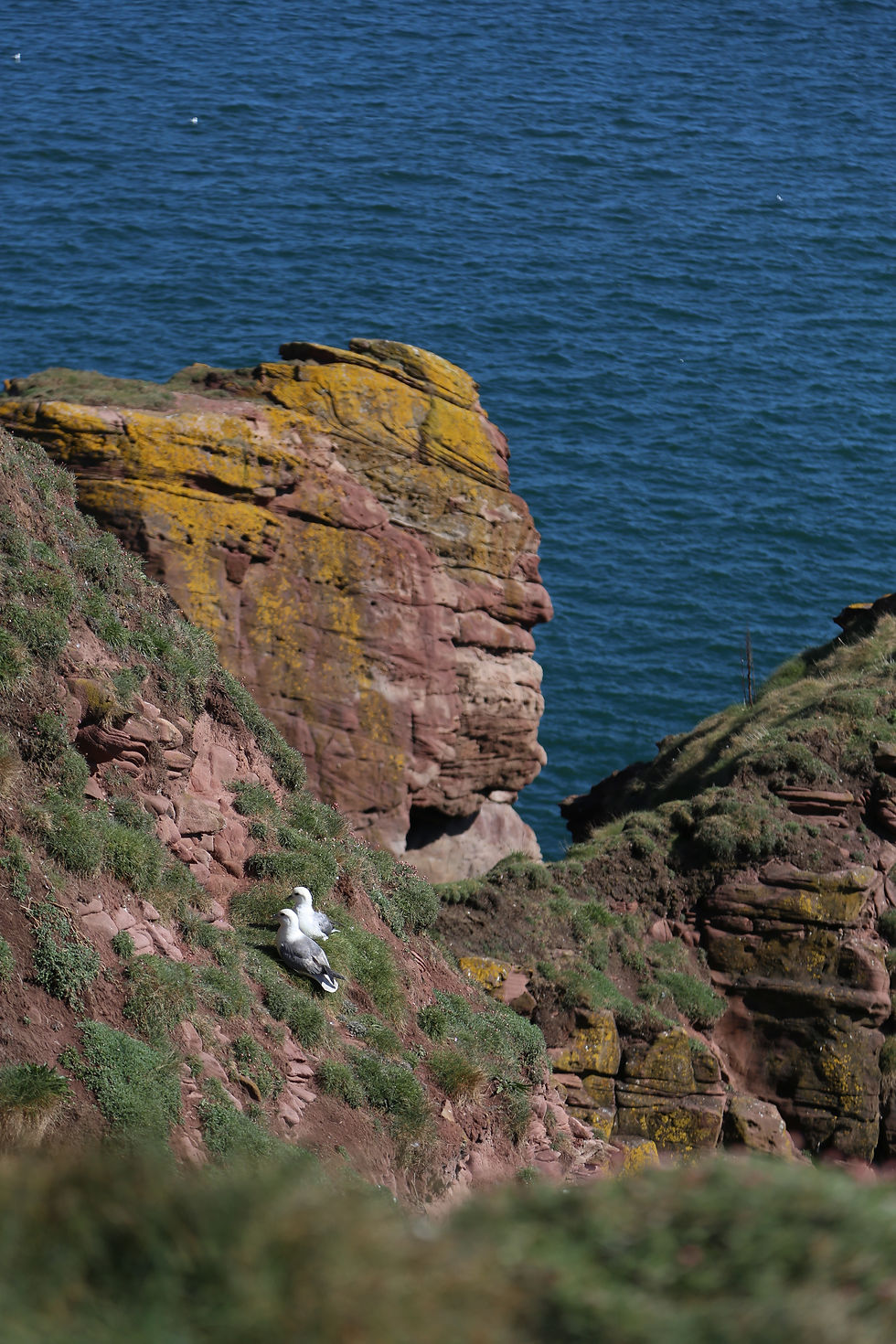
I had read about Scotland’s seabirds - about the magic of puffin watching on Lunga, and the way that the St. Kildans relied on the flesh and oil of the island’s fulmar population. But the first time I saw them for myself was in mid-April, walking along the cliffs in Arbroath.

I came for the dramatic red rock plunging down into the North Sea, and the hidden beaches full of marvellously coloured stones sparkling in the sunlight. But it was the kittiwakes nesting in the rocks that really caught my attention. I sat on the edge of the cliff, watching them from above as bird couples tended to their nests and gathered food, moving about on the rocky ledges. The noise was encompassing, and mixed with the smell, it kept me there for ages.

I saw them again on my recent trip to the Mull of Galloway, that furthest southern tip of Scotland. As I made my way around the tip of the peninsula, the rocks dropped off steeply into the sea below. Sheep grazed on the grassy tops, while the cliffs below were full of the sounds and smells of the seabirds. Birdwatching boats made their way through the waters below as I sat on the cliff edge, gazing down on the scene.

I had great weather for my trip down the Rhinns of Galloway. After what’s been one of the coldest and wettest Mays in Britain in years, the sun was shocking. The roads of the South Rhinns are primarily winding, single track affairs that snake over and around verdant emerald hills.

Here, cows replace the sheep, with endless fields of beautiful black and white and brown. The roads are lined on both sides with overflowing wildflowers, erupting in the most marvellous shades of white, yellow, pink, blue and purple. That feeling of driving through such a saturated landscape, the sun beating down after such a long period of cold and rain and lockdown, felt like true freedom.

I felt like I was living out one of those idyllic British childhood summers you see on TV. In the town of Portpatrick, I sat on a bench-lined pier, eating ice cream in the sun while children played in the water below. I walked along the greenest of cliff edges, sitting amongst the pink sea thrift as I looked down at the water below. Everything was so vivid, as if the sudden sunshine intensified the very pigments of my surroundings.
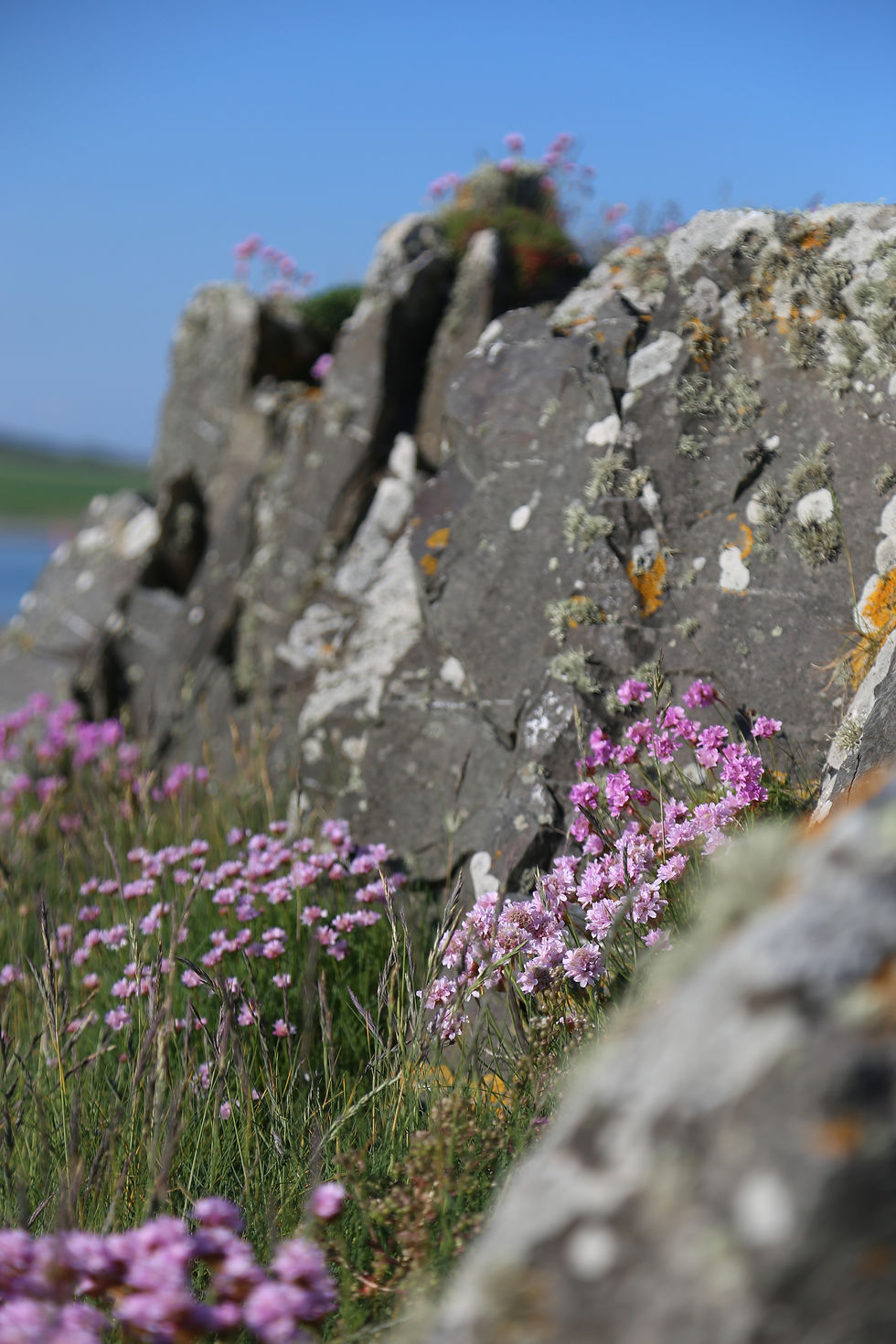
I went for long walks on the beach, chatting with locals and examining the washed up jellyfish. I visited ancient rock carvings in old kirkyards, and camped out on the beach. And after a hot day in the sun, I swam out into the freezing ocean, nothing between me and the coast of Ireland.

Tuesday morning I woke up to a thick layer of cloud rolled over the bay. The air was cooler, the colours flattened. It felt almost comforting, like a blanket being smoothed over me. As I made my way down to the beach, I pulled my jumper over my sunburnt shoulders, and it felt like the Scotland I’ve come to know. The same green hills rolled down around the bay, but reached up instead to that light, solid gray that so often makes up the Scottish skies.
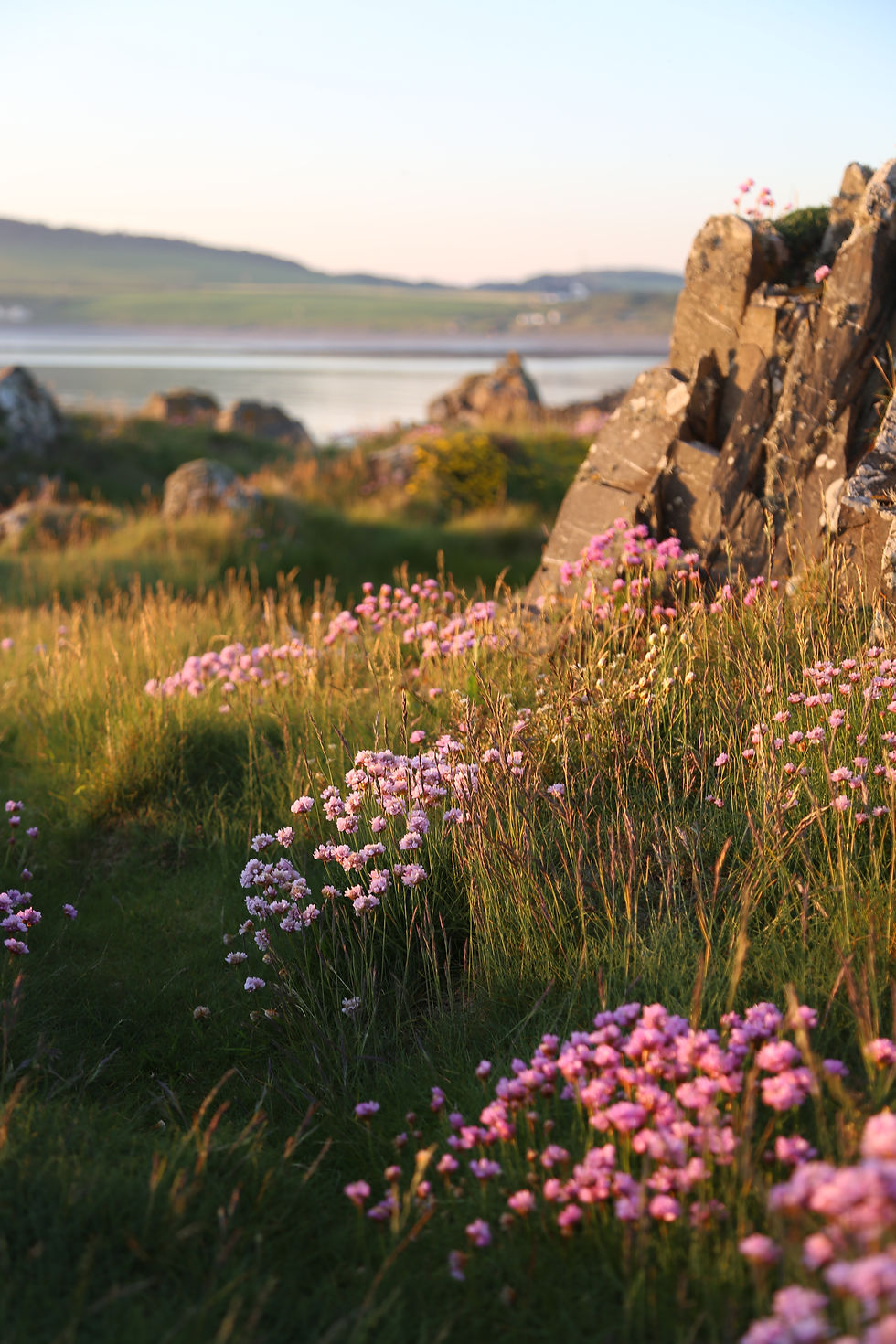
We don’t always live in the vivid. Sometimes we do. Sometimes we encounter long weekends lost in the heat and sunshine of summer on the Mull of Galloway. Sometimes I feel the need to constantly run and do and see more, to fill my life with vivid intensity and experiences. But we also live in the middle gray. We live in days at home and coffee in the mornings, trips to the grocery store and nights knitting on the sofa. These are also important moments in our stories.

I looked around me on the beach. Behind me were clumps of sunshine yellow wildflowers, tiny petals quivering in the wind. Even the greens were varied, some bright, some faded, light, dark, all with different shapes and textures. The stones at my feet, gray at first sight, revealed a rainbow of shades, from dusty rose to orangey-beige to eggplant and cool blues and greens. It just takes a good look to see it.

Rabbi Abraham Joshua Heschel says that “our goal should be to live life in radical amazement. ....get up in the morning and look at the world in a way that takes nothing for granted. Everything is phenomenal; everything is incredible; never treat life casually. To be spiritual is to be amazed.” The key for us then, is to constantly look around ourselves and find the wonder in everything, to wake up in the morning and marvel at the miracle of existence.

You never know what you’re going to find, even when it’s right in front of you. It may be as obvious as masses of wildflowers in the sunshine, or may require some searching. There might be cliffs full of exotic seabirds nesting right below you, but if you don’t peer over the edge, you may never see it. But if you give it time, sit back and let the reek of sea birds fill your nostrils, you may just find something incredible.

In the words of Ethiopian Israeli hip-hop due Cafe Shachor Chazak, הָעוֹלָם יִתֵּן לְךָ מַתָּנוֹת בְּשֶׁפַע - the world will give you gifts in abundance.






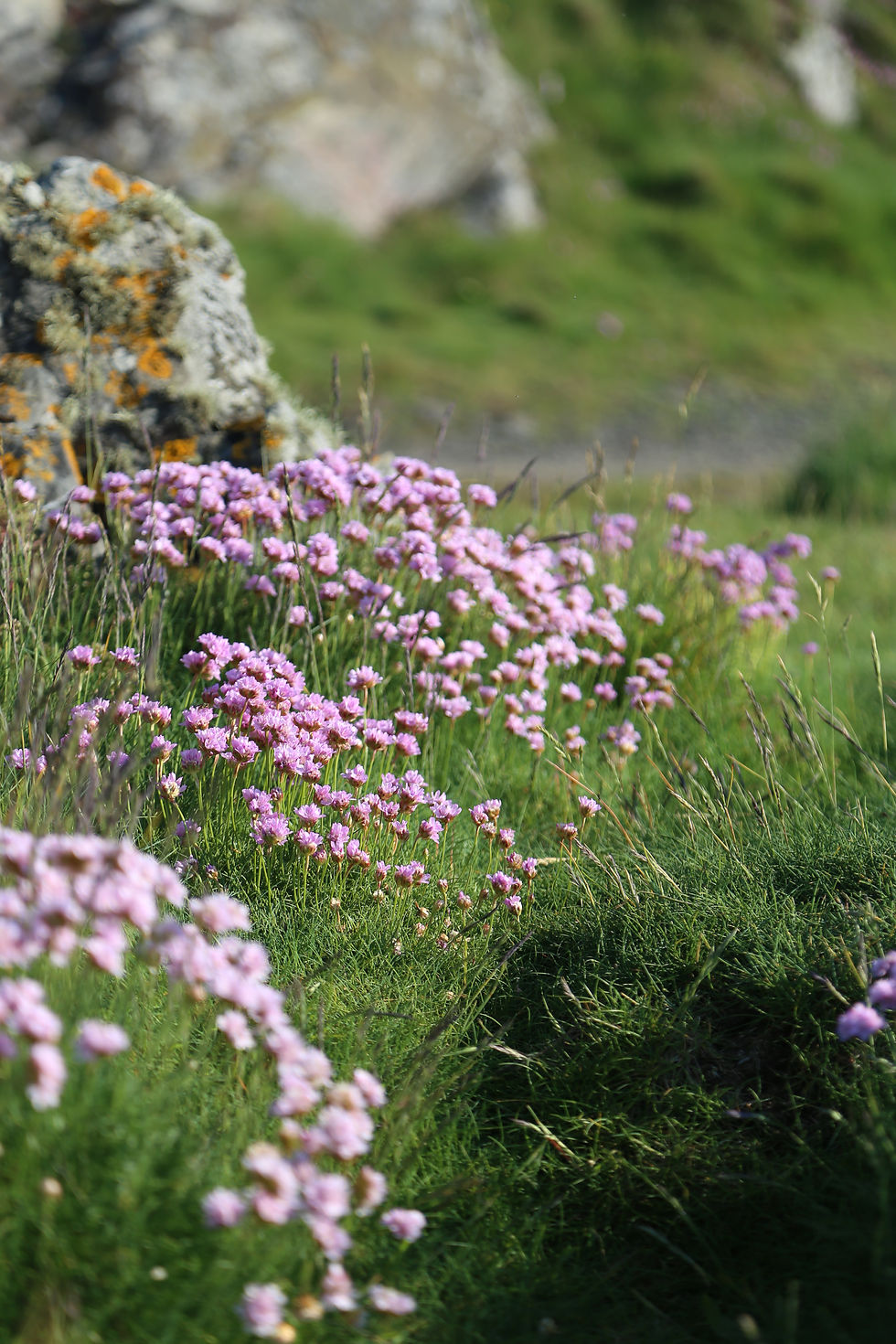

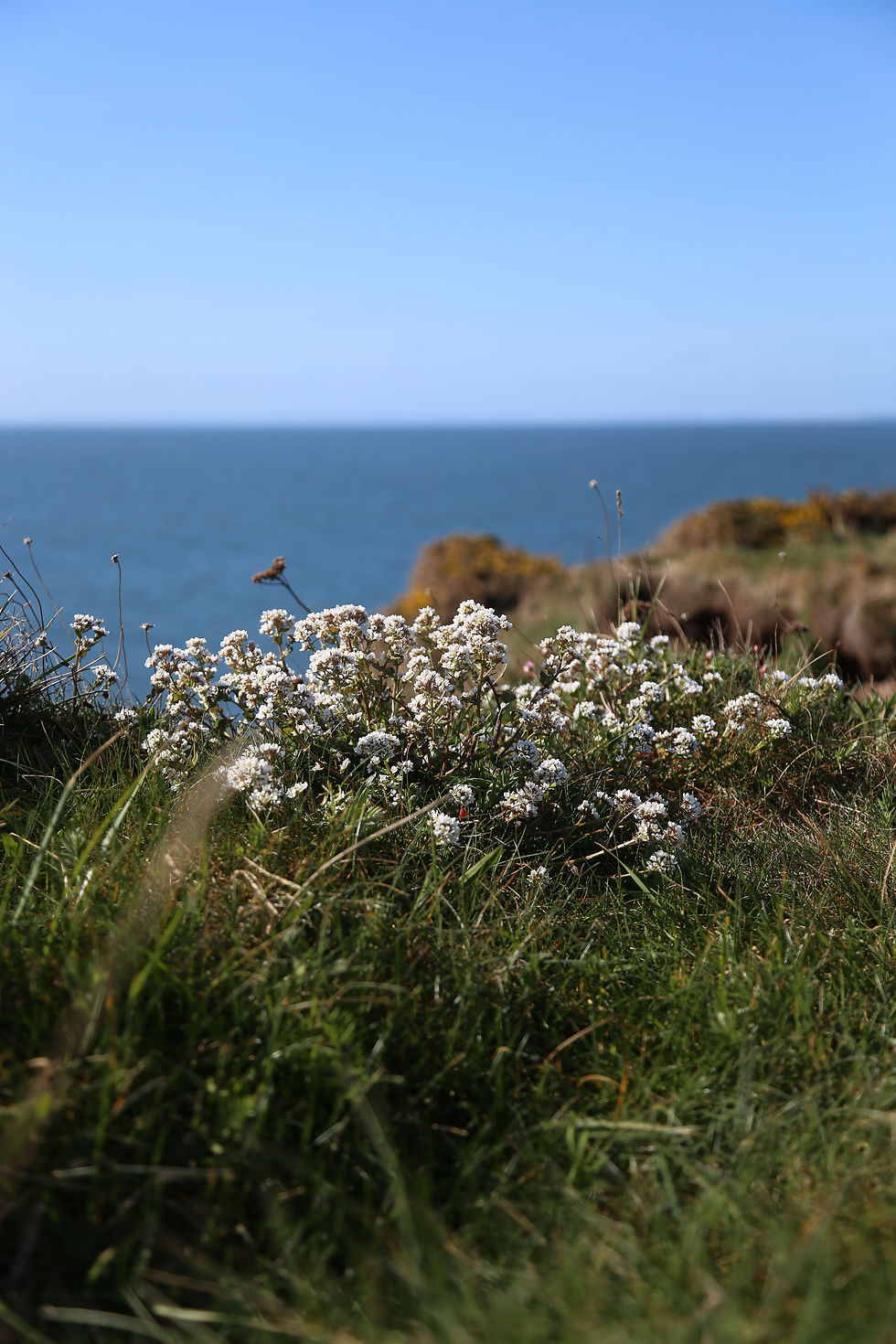


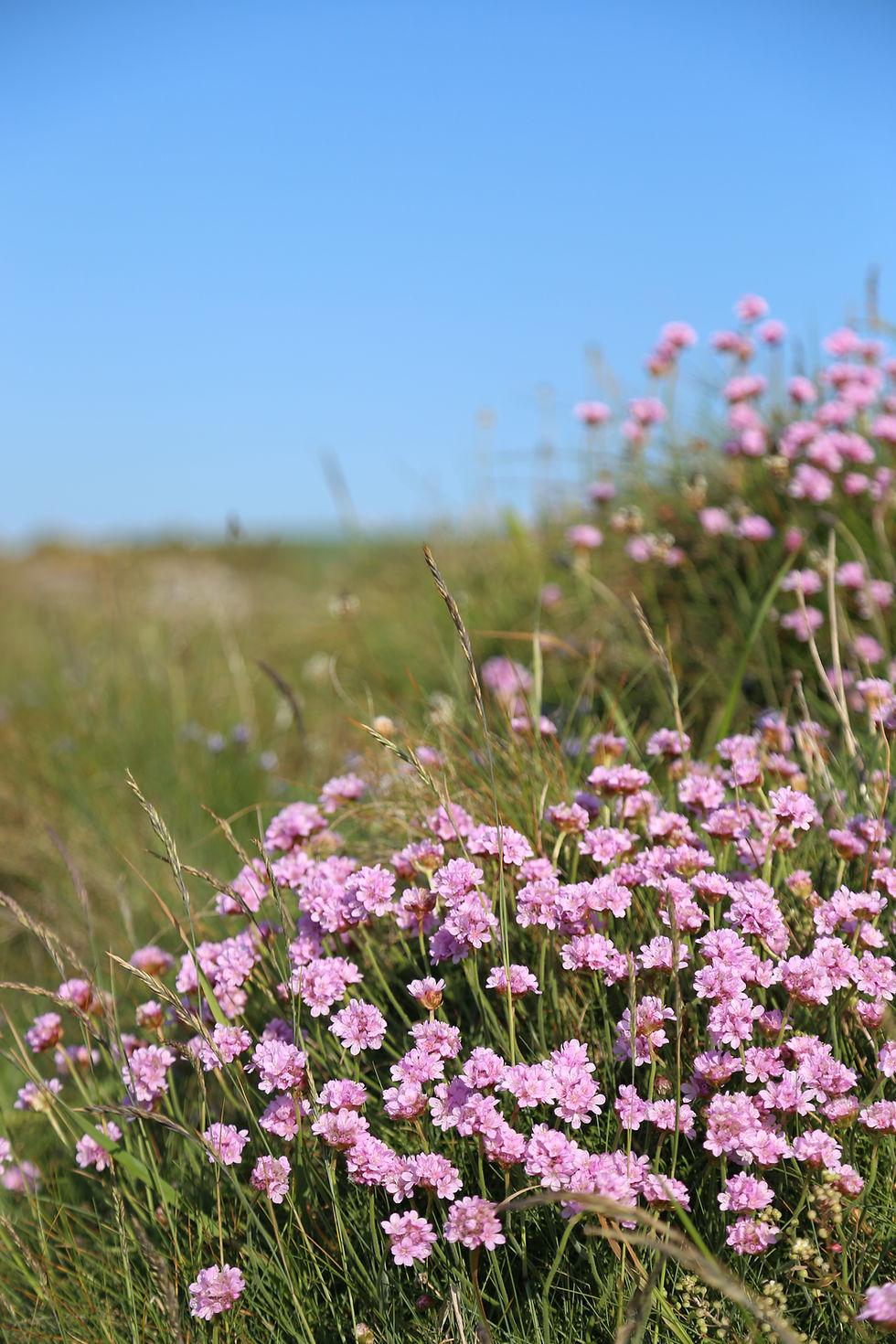






















Comments